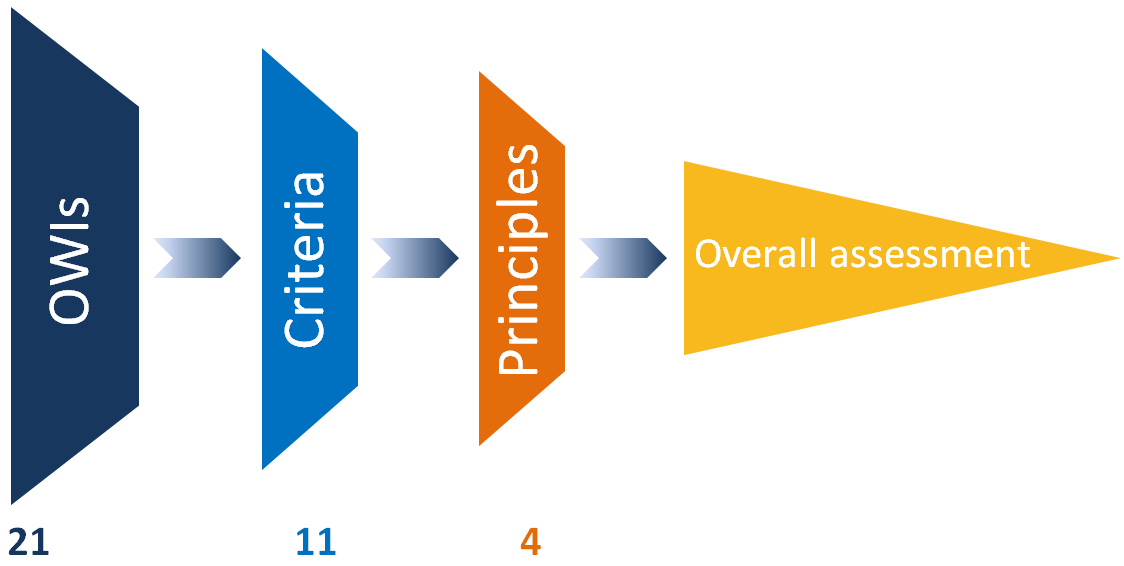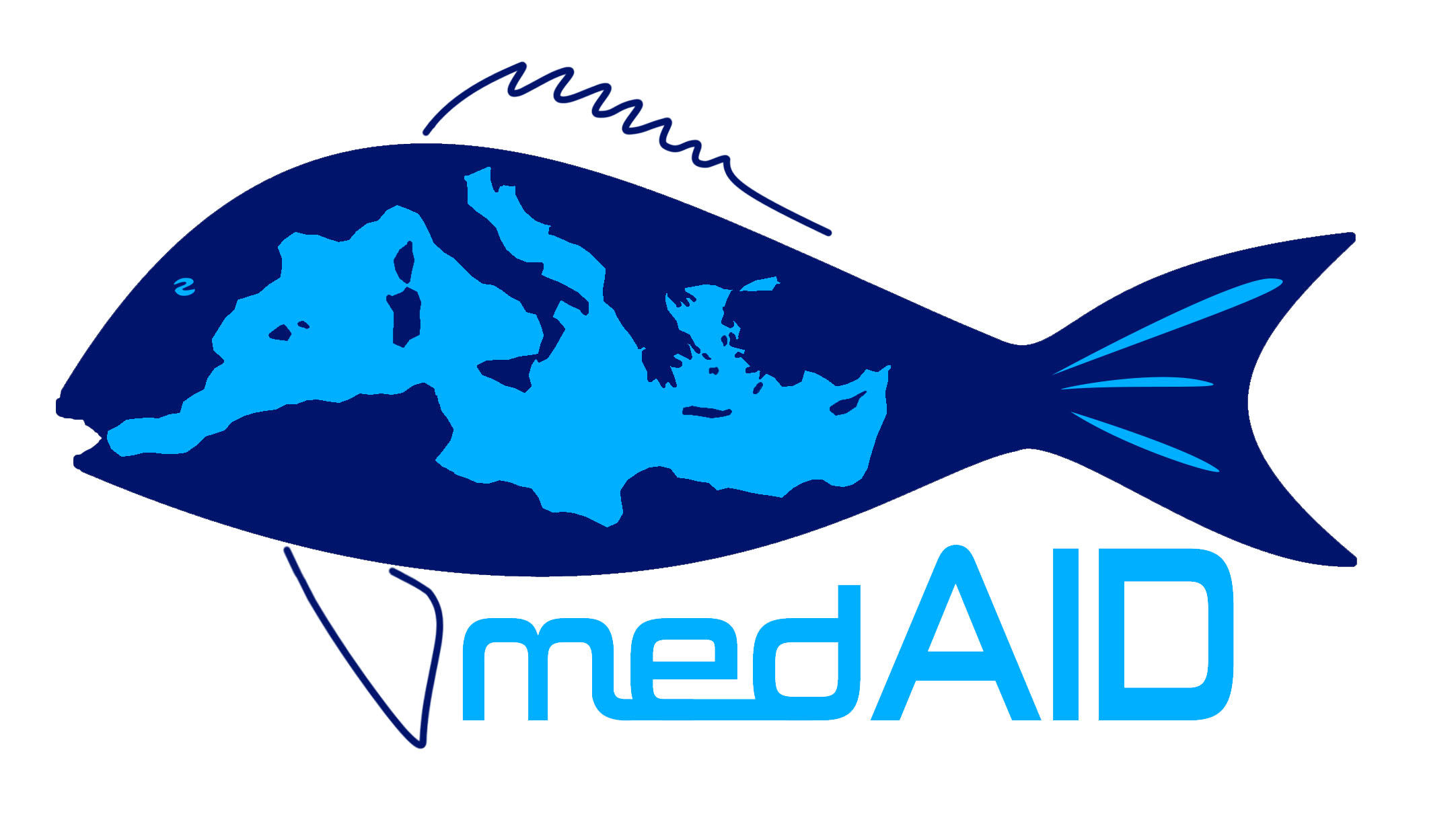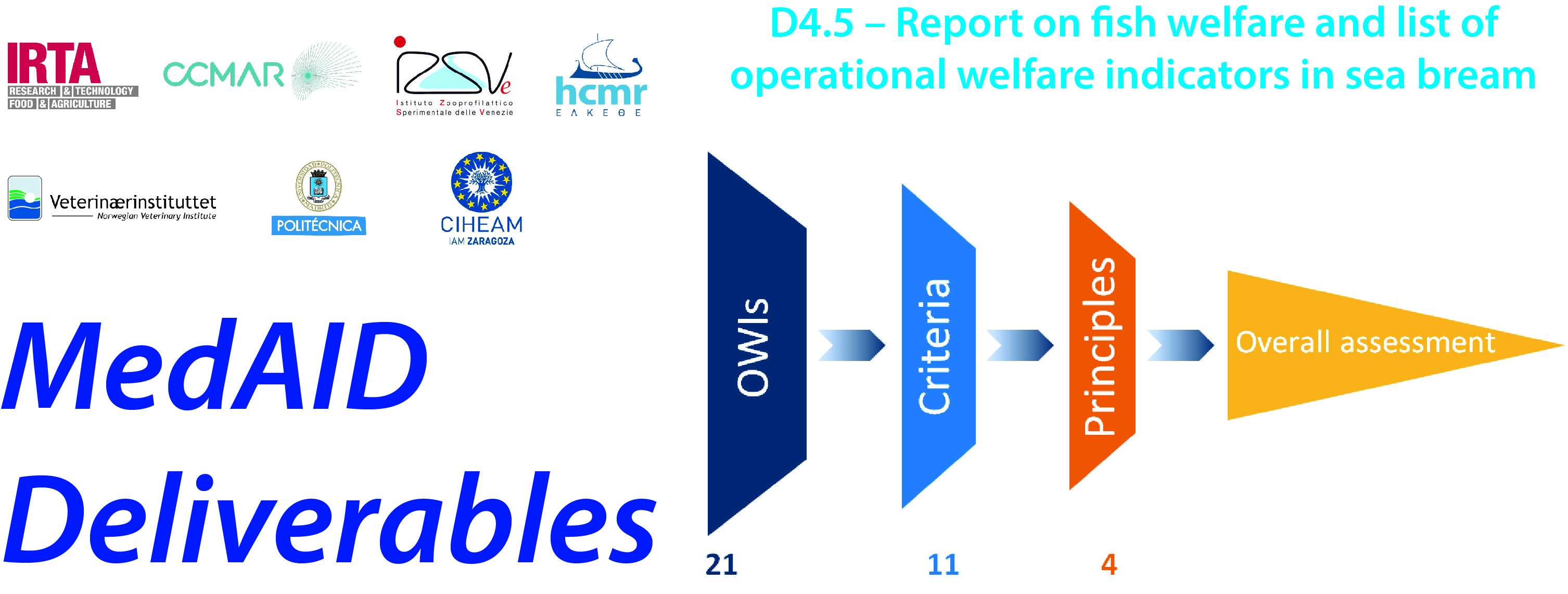There is a trend towards increased concern for the welfare of animals under human care, and this concern has expanded to include the welfare of farmed fish. However, at present, the necessary operational welfare indicators (OWI) and implementation protocols required to monitor and safeguard the welfare of farmed fish are lacking. Operational Welfare Indicators (OWI) in aquaculture are measures that can be used to assess welfare status in individual animals or groups of animals, made practical and operational on commercial aquaculture facilities (Martins et al. 2012). The best set of OWIs for a particular situation will depend on variables such as farmed species, life stage, husbandry system, environmental conditions, especially temperature and photoperiod.
The main objective of this report is to list a potential range of targeted OWI protocols to be used in the industry to improve the knowledge on welfare of seabream, the main fish species cultured in the Mediterranean area.
The approach taken is based on the five freedoms in an attempt to follow a methodology already developed to certify farmed terrestrial animals including mammals and birds. This methodology was selected for two reasons; firstly, it has been developed over the years by experts in the field of animal welfare from all over Europe and has been partially validated, secondly it can be easily applied in a farmed fish welfare certification.
In order to develop a system to perform a welfare assessment for seabream (figure 1), different principles need to be covered to achieve animal welfare. These principles must be valid throughout the animal’s entire life (Veissier and Evans 2007). Butterworth et al. (2009) conducted a literature review and identified a set of 12 welfare criteria (11 in the case of seabream). These criteria were then grouped under the four principles; good feeding, good housing, good health, and appropriate behaviour. The welfare criteria must be applicable to all farmed species (in our case all farmed fish) and they should be grouped under the four wider principles. Measures to assess these criteria corresponded to 21 potential OWIs. Each OWI was then plotted on a small chart and a final calculation method was proposed.
The potential OWIs identified are not new, but as no formal procedure to assess seabream welfare is available, this report can serve as a starting point. It is also recommendable to divide and extend the present report on life stages. For the grow-out phase, classification by production system should be considered (e.g. earthen ponds, sea cages, RAS facilities).



Thanks very good job